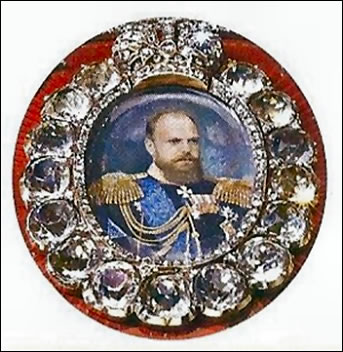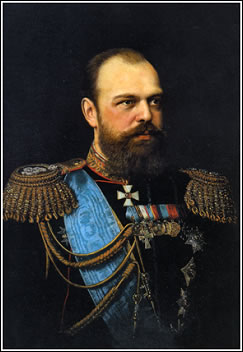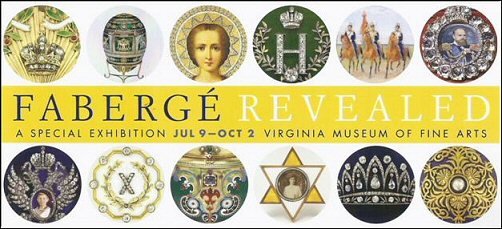
Dr. Géza von Habsburg, guest curator for the Virginia collection, in his talk to the attendees shared anecdotes from his association with Fabergé objects as an auctioneer, exhibition curator, and author of more than a dozen books on the subject. In his work with the Virginia Collection for two years he studied and authenticated the Fabergé objects, identified those made by other makers, and added editorial notes to forgeries and objects with uncertain origins. The New York Times (July 1, 2011, C25) headlined its story about the venue, A Fabergé Exhibition without Fauxbergés. In it the author mentions the shameless way Armand Hammer used “Fabergé hallmarking tools to reattribute early 1900’s pieces made by other Russian goldsmiths or their French archrival Cartier.” Romanov portraits clipped from postcards and newspapers were inserted into frames sold by Hammer, and most objects were advertised with an imperial provenance.
Fabergé Revealed at the Virginia Museum of Fine Arts, an easy-to-read and informative scholarly catalog by Dr. von Habsburg and five Fabergé scholars, is illustrated with stunning new photographs. Collecting Fabergé Today: The Hodges Family Collection and its accompanying catalog (Keefe, et al. Fabergé: The Hodges Family Collection, 2009) complement the Fabergé Revealed exhibition. All in all more than 500 objects, including the five Pratt Imperial eggs, the Napoleonic Egg from the Gray Collection, and the Nobel Egg and the Fabergé tiara from the McFerrin Collection, can be seen by museum visitors until October 2, 2011. After this date the Virginia Collection will be installed in a new permanent location in the museum and the Hodges Collection moves on the Frick Art and Historical Center in Pittsburgh, Pennsylvania.
The Fabergé enthusiasts group traveled to the Hillwood Estate, Museum, and Gardens in Washington (DC) for a guided tour of the permanent Marjorie Merriweather Post Collection with two Fabergé eggs and an extensive collection of Russian decorative art objects. Selected highlights from the lively discussions and the information sharing among Fabergé enthusiasts are summarized below. The editors hope this special edition of the Fabergé Research Newsletter will bring forth additional research discoveries and/or questions we can share with our readers. We invite you to participate!
Our thanks to Alex Nyerges, Director of the Virginia Museum of Fine Arts, and his wonderful staff, and Dr. Géza von Habsburg, guest curator, for making the visit for the Fabergé Enthusiasts so special. Many of you suggested we do this again soon – what a compliment to our hosts … we thank our readers for sharing their snapshots.
Discovery of a Photograph for the Missing 1887 Egg
Congratulations to Anna and Vincent Palmade, Fabergé enthusiasts and egg sleuths, who have found a black and white photograph of the missing 1887 “Gold Egg with a Clock or Watch”. The egg was sold from the estate of Rena Clark (possibly 1890-1964), a resident of New York City and the widow of Joseph Clark of Louisville, Kentucky, at the Parke Bernet New York auction on March 6-7, 1964, lot 259. Buyer???? Price realized $2,450. The hunt for the egg is on! The essay written by the Palmade’s details the steps involved in this exciting research journey. Readers with additional information are invited to contact the Editors.
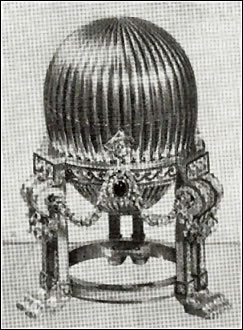
Missing 1887 Fabergé Egg
(Courtesy Parke Bernet)
Elena Lioubimova, independent researcher, has published a reinterpretation of the inscriptions on the Pelican Easter Egg in the Pratt Collection.
Fabergé Frames
A star-shaped frame by Mikhail Perkhin now in the Pratt Collection was with the Imperial family during their imprisonment in the “House of Special Purpose” of the Siberian town of Ekaterinburg. Its story is told in a research essay, A Silent Witness: The Hidden Treasure of a Fabergé Frame by Kieran McCarthy of Wartski (Fabergé Revealed, 224-5).
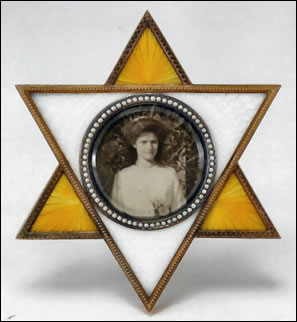
Frame with an Original Photograph of Grand Duchess Tatiana
(Courtesy Pratt Collection)
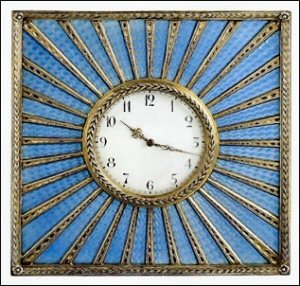
4 5/16 Inches Square
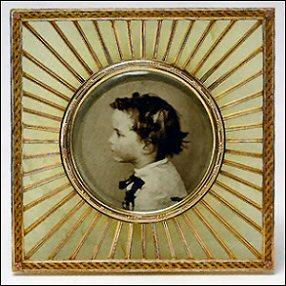
3 Inches
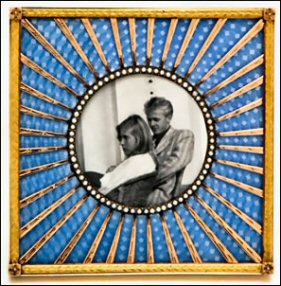
3 3/16 Inches
Courtesy: Private Collection, Pratt Collection, McFerrin Collection (C&M Photographers)
An identical photograph, autographed by the children and given to the Standart‘s Watch Officer Nikolaï Vasilevich Sablin, can be seen in the book Десять лет на императорской яхте Штандарт” (Ten Years on Board the Imperial Yacht Standart, 2008). This book reprints Sablin’s memoirs, which had already been published in emigration, and presents a large collection of documents and photographs belonging to Sablin and now held at the Russian State Naval Archives. Before becoming the Standart‘s Aide-de-Camp, N. V. Sablin (unrelated to Standart‘s Senior Captain Nikolaï Petrovich Sablin) had been attached to Grand Duchess Tatiana (each grand duchess had an officer in attendance, especially when they went ashore). Having served on the Standart from 1906 to 1916, Guards Equipage Captain N. V. Sablin became quite intimate with the Imperial Family and saw the imperial children grow up, as his photograph collection shows. (Research by Daniel Brière)
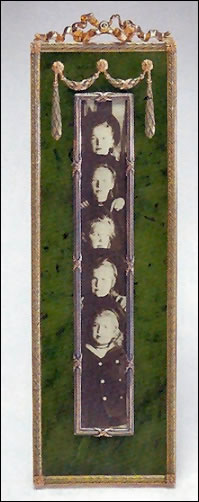
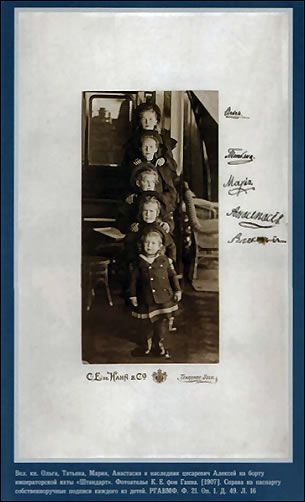
(Courtesy Pratt Collection and Russian State Naval Archives)
Based on his scholarship, Géza von Habsburg suggests several identical versions of certain floral compositions by Fabergé exist, some with no marks, some with genuine and some with forged hallmarks added later. A high percentage of the flowers in the Pratt Collection are no longer attributed to Fabergé.
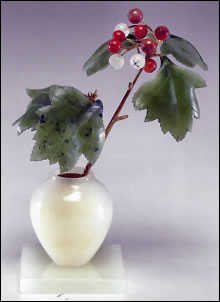
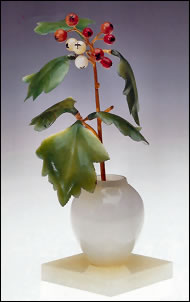
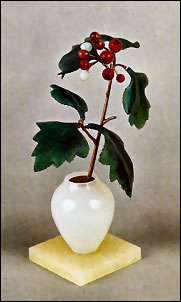
English Hawthorn Examples
(Courtesy of Pratt Collection, Gray Collection, Christie’s Geneva, November 11, 1975, erroneously called a Rowan Tree)
A bonus for the researchers of the Zarnitsa sailor in the Pratt Collection (Fabergé Revealed, 102-109, 202-3) was the discovery of a three-handled silver cup inscribed S.Y. Zarnitza. It was presented by Grand Duke Mikhail Alexandrovich, brother of Tsar Nicholas II, to the workers at the Scotts’ Shipbuilding and Engineering Company, after the refurbishment of the Zarnitsa vessel in 1906-07. They had been the builders of the original vessel named Foros in 1891 for the Russian tea millionaire, A. G. Kuznetsov. The name was changed in 1895 to Zarnitsa (Summer Lightning) by Grand Duke Georgii Alexandrovich. The cup is on display in the McClean Museum and Art Gallery, Inverclyde Council, Greenock, Scotland.
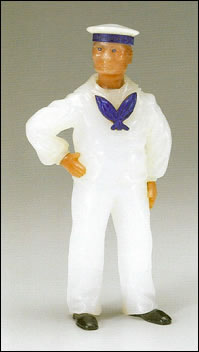
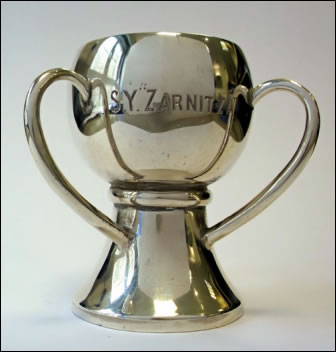
Zarnitsa Sailor and S.Y. Zarnitza Cup
(Courtesy Pratt Collection and McClean Museum)
For our continuing series (Fabergé Research Newsletter, Winter 10-11, Spring 11) on the Bismarck Imperial Presentation Box in the Hodges Family Collection we asked Russian military enthusiast Daniel Brière to tell us about the Alexander III uniform depicted on the portrait miniature painted by Alexander Wegner. Here is what he wrote:
As soon as he became emperor in 1881, Alexander III (1845-1894) embarked on a policy of Russification which did not spare the Army and its appearance. The latter changes took place with unusual speed, the whole Armed Forces having been re-clothed in a “Russian peasant” style uniform by the summer of 1882. The button-less tunic, which looked like a kaftan, had an oblique double breast with hooks and a pleated back. It was worn over wide trousers, baggier than before, which were tucked into high boots. The miniature portrait on the Bismarck Box shows the Emperor wearing the new full-dress uniform (общегенеральская форма) common to all general officers established on July 20, 1882.
As historian Richard S. Wortman put it: “His general’s uniform, the Cross of St. George always in prominent view, was his favorite attire for important celebrations.” Therefore, it is not surprising this uniform would have been chosen to adorn the Bismarck Imperial Presentation Box.
Folding Fans with Fabergé Montures
Fans with the marks of Fabergé are a unique genre with the leaf of the fan made either of lace, or painted on a variety of one-dimensional mediums by an artist – some are signed. The Fabergé workmasters, Mikhail Perkhin and Henrik Wigström, added three-dimensional art in the form of sticks and guards. The fan illustrated below consists of lace, tortoise shell, and the guard is embellished by the Wigström shop. Readers aware of Fabergé fans are asked to contact the editors for an ongoing research study.
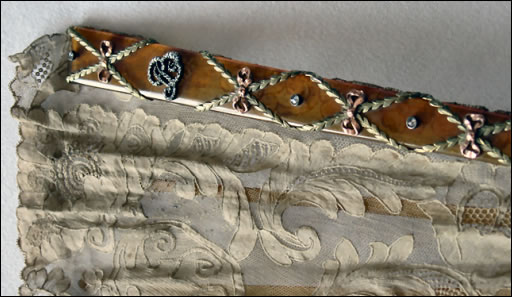
Lace Fan with Fabergé Montures
(Courtesy McFerrin Collection)
Jeffrey Eger Auction Catalogues has out-of-print Fabergé books and a few of the 1887 missing egg auction catalogs for sale. First come, first served!
Royal Fabergé, an exhibition being held at the Queen’s Gallery, Buckingham Palace, is on view from July 23 – October 3, 2011. The accompanying exhibition catalog with the same name by Caroline de Guitaut gives an insight into many Faberge masterpieces (including three Imperial Easter Eggs), and how they were aquired by six generations of the British Royal Family.
Tillander-Godenhielm, Ulla. Fabergén suomalaiset mestarit (Fabergé’s Finnish Workmasters), 2011. Revised edition with more in-depth research of a 2008 numbered edition with the title, Fabergé ja hänen suomalaiset mestarinsa (Fabergé and His Finnish Workmasters). In Finnish. The text gives biographical details on the workmasters from local archives, family collections, etc., and information about their work and their lives. Beautifully illustrated and with selections from the memoirs of workmaster Hjalmar Armfelt, recently discovered. The book may be obtained from the Academic Bookshop in Helsinki.
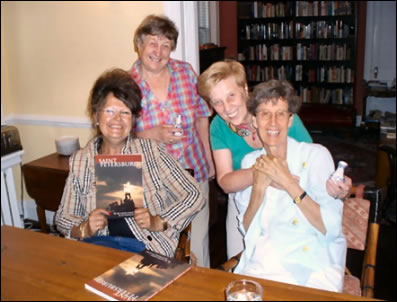
(Courtesy of Galina Korneva)
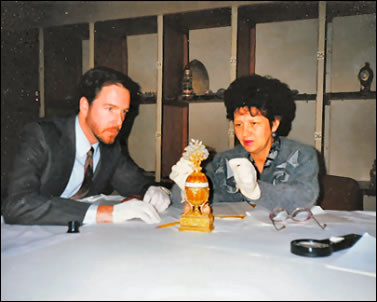
(Courtesy of Tim Adams)

